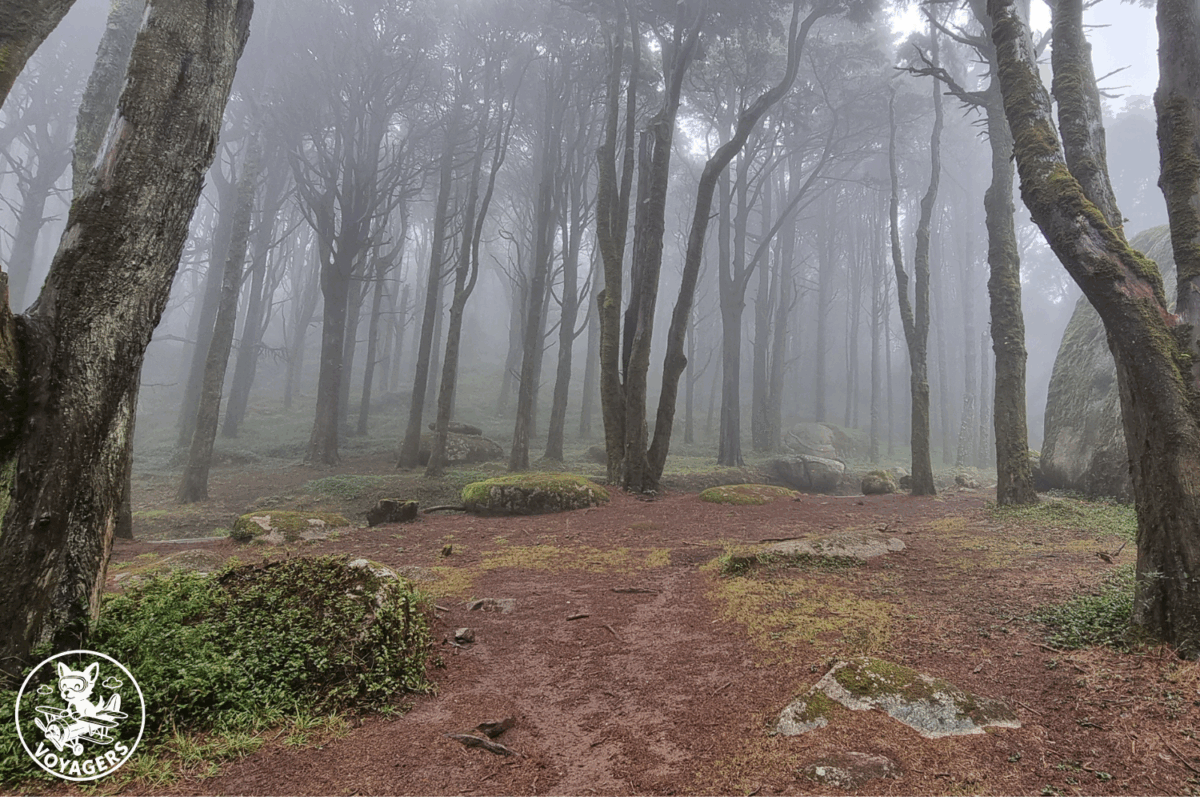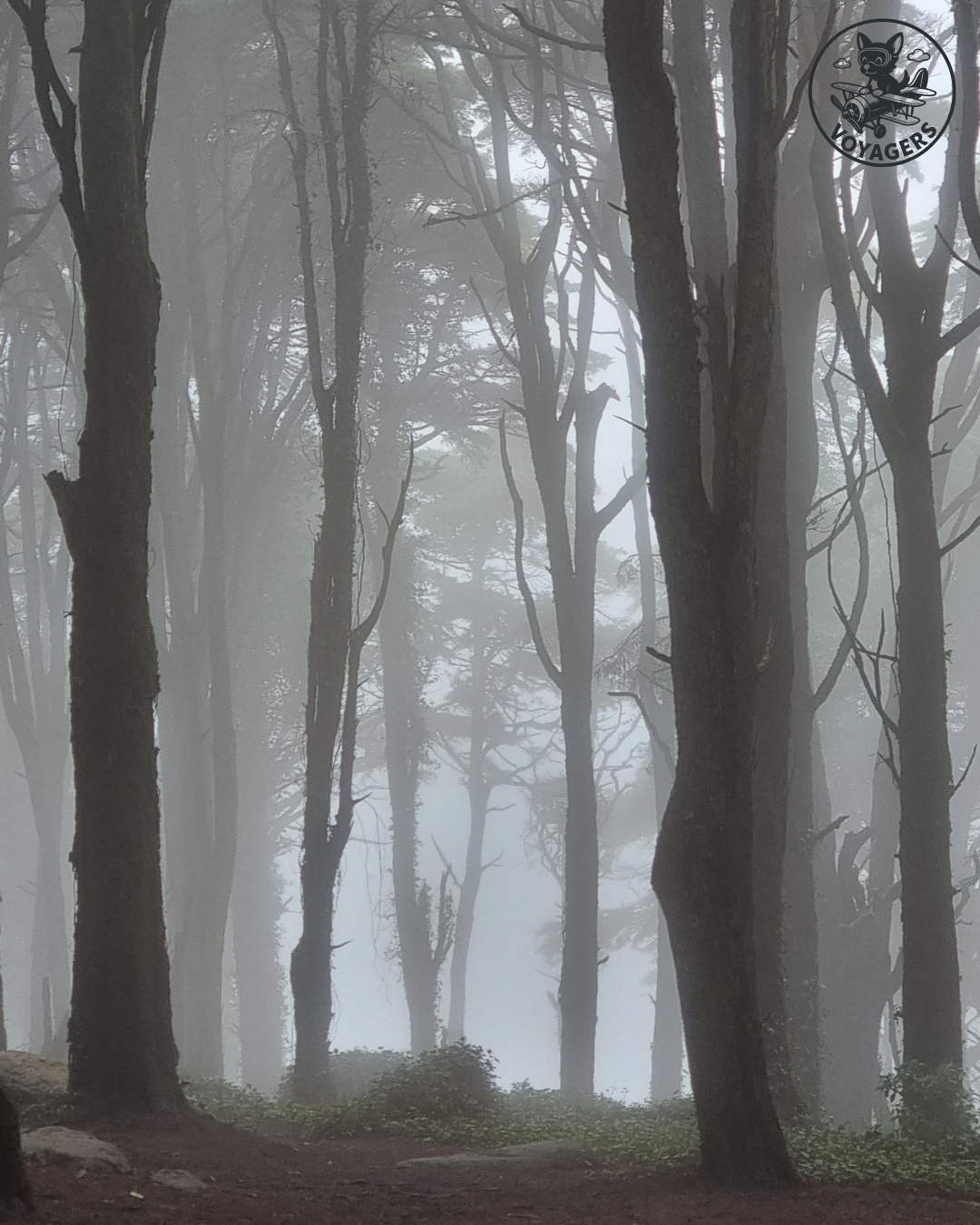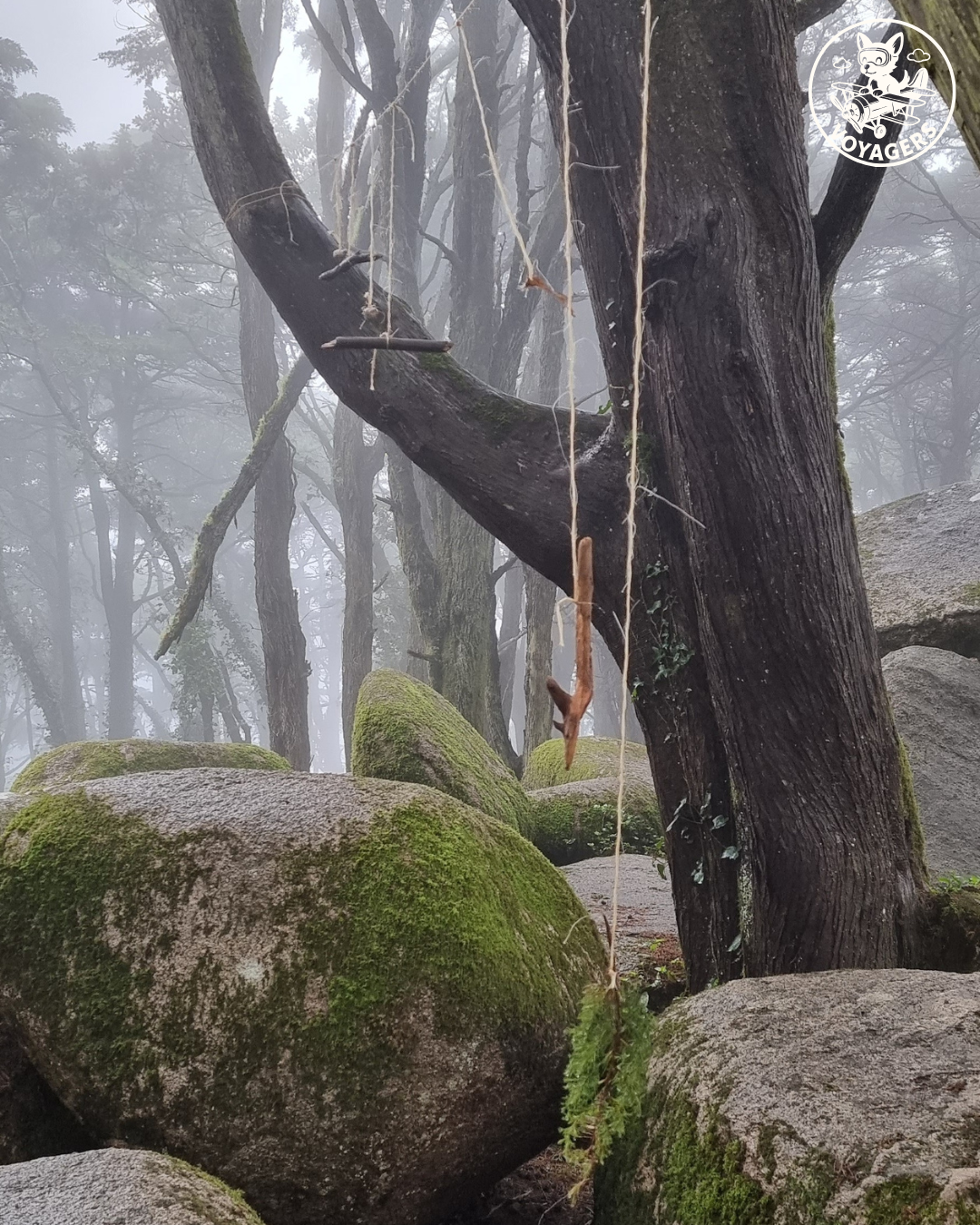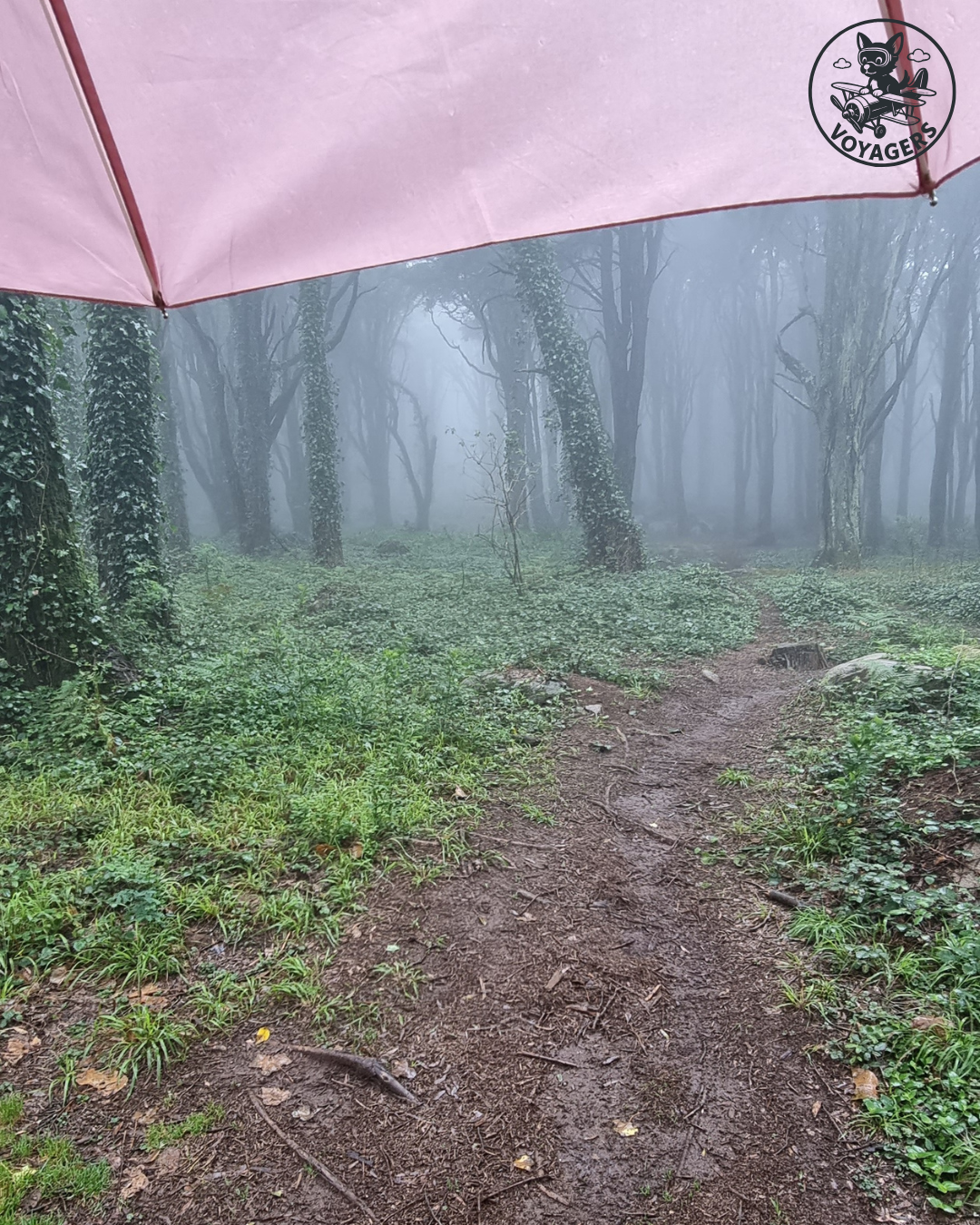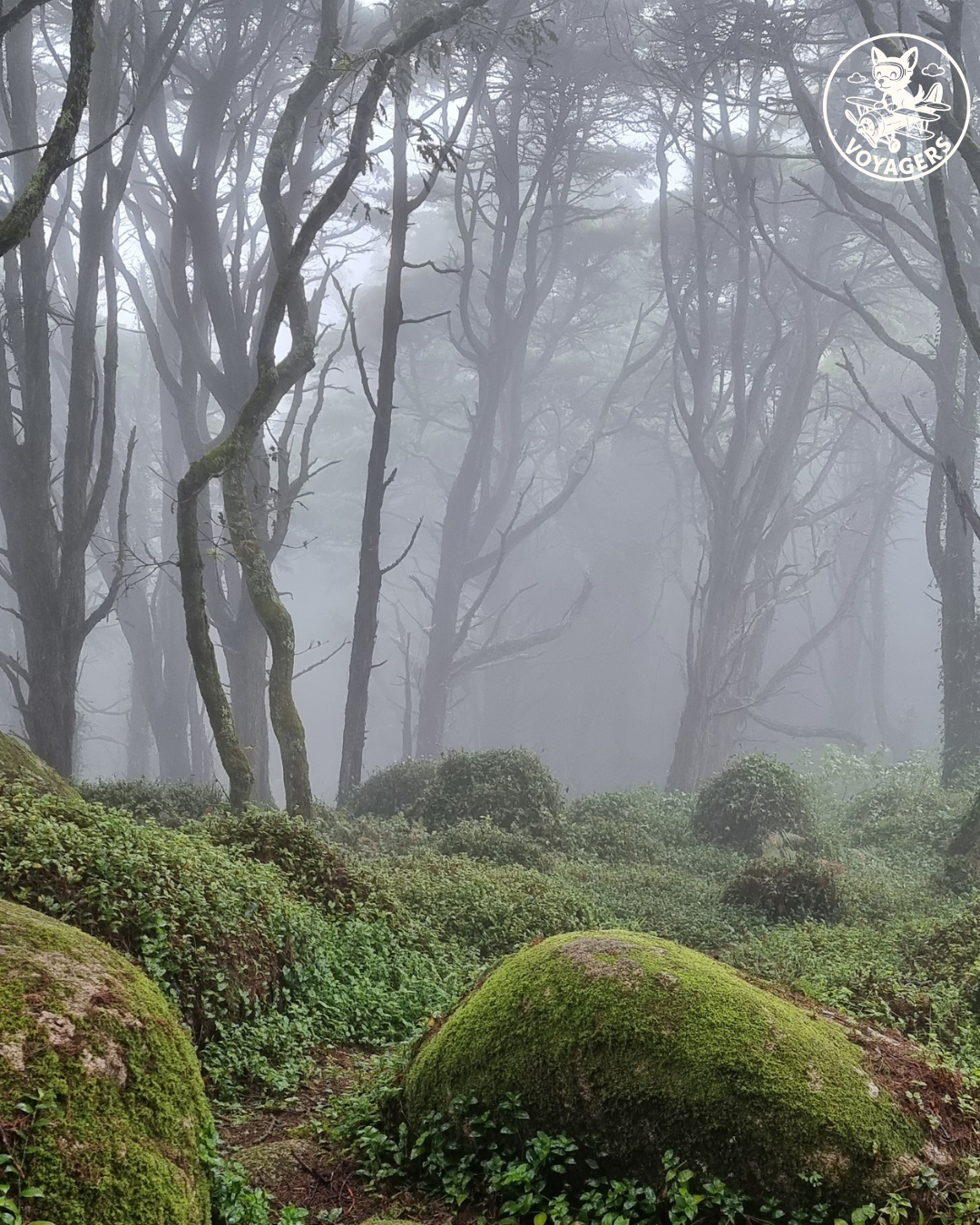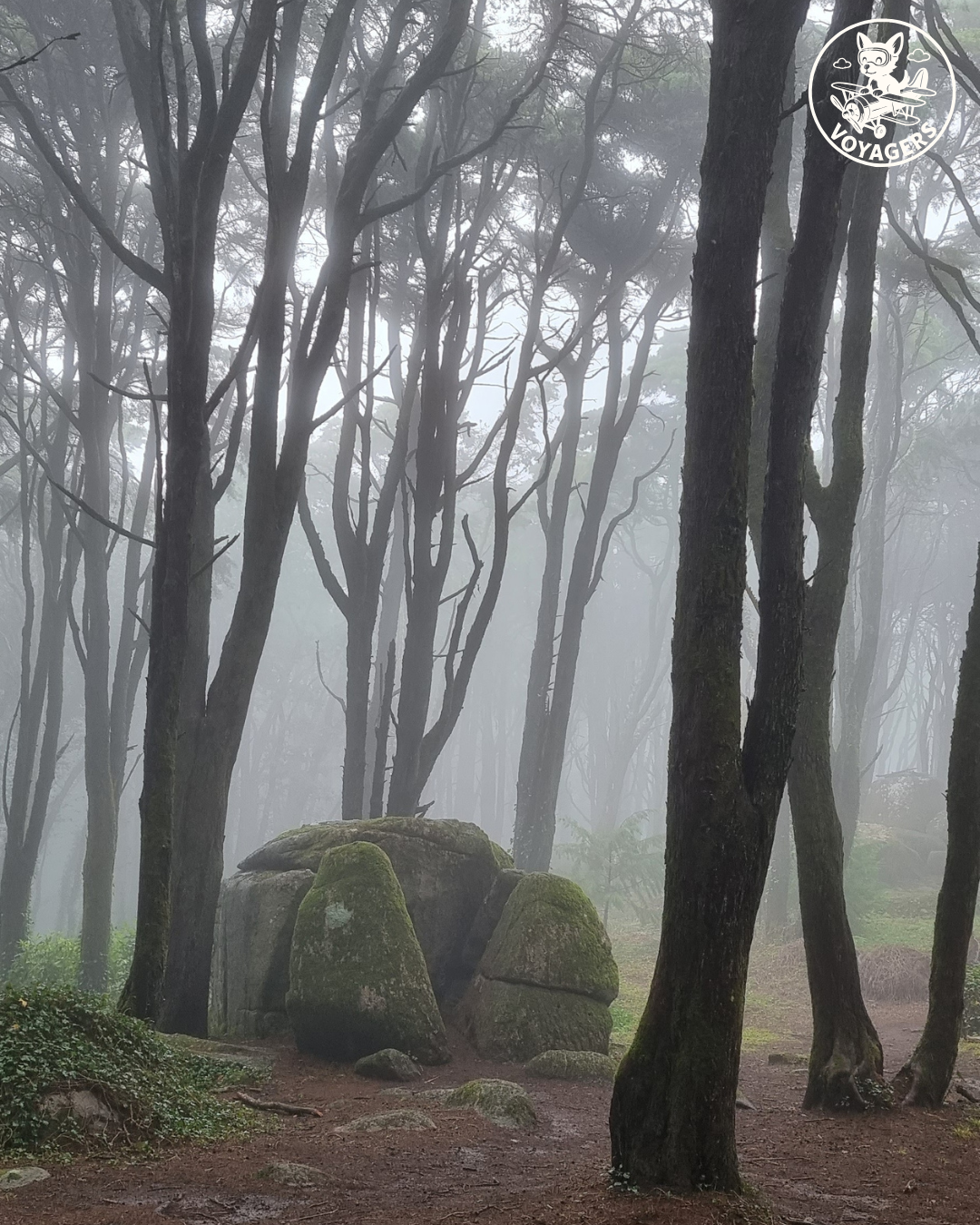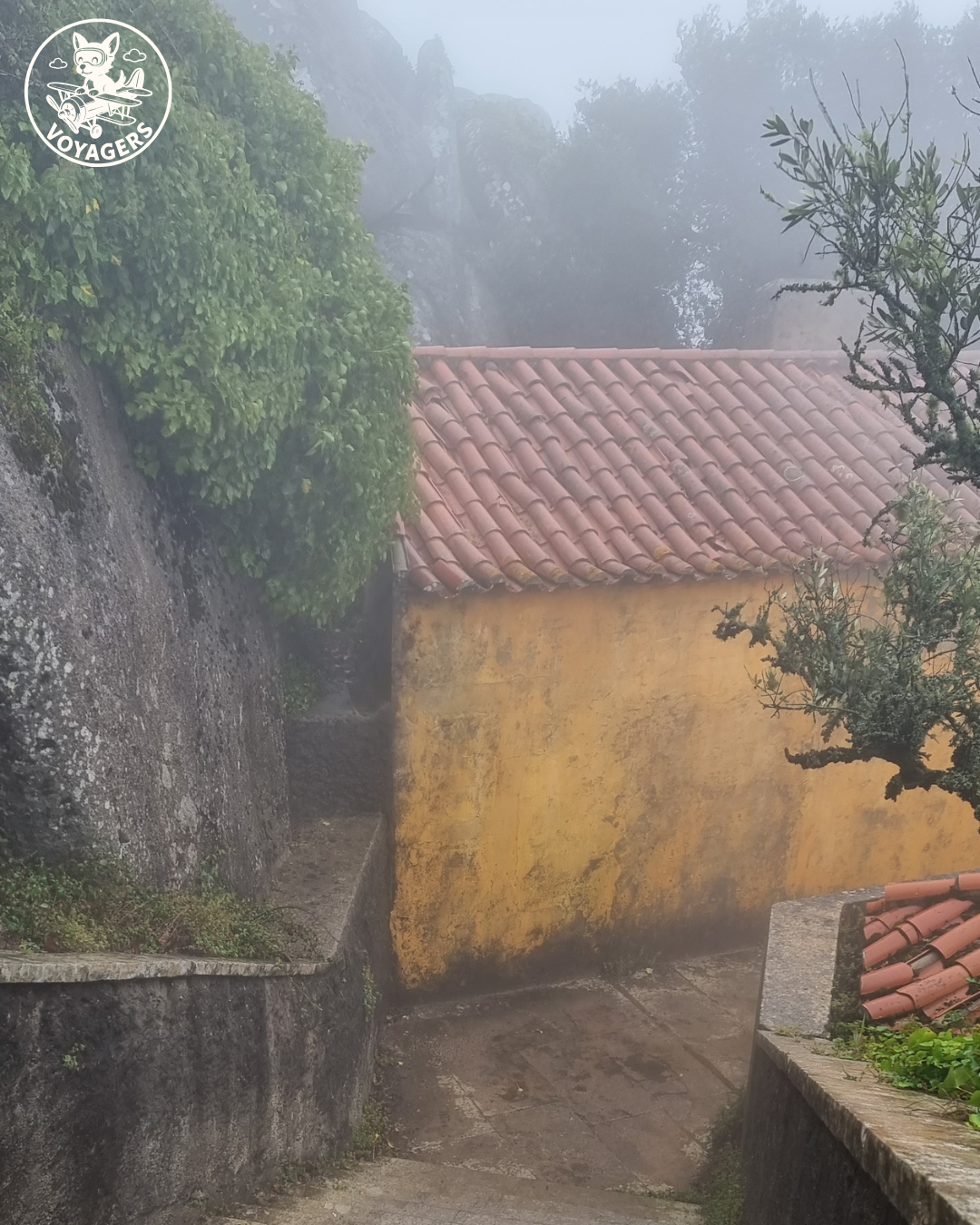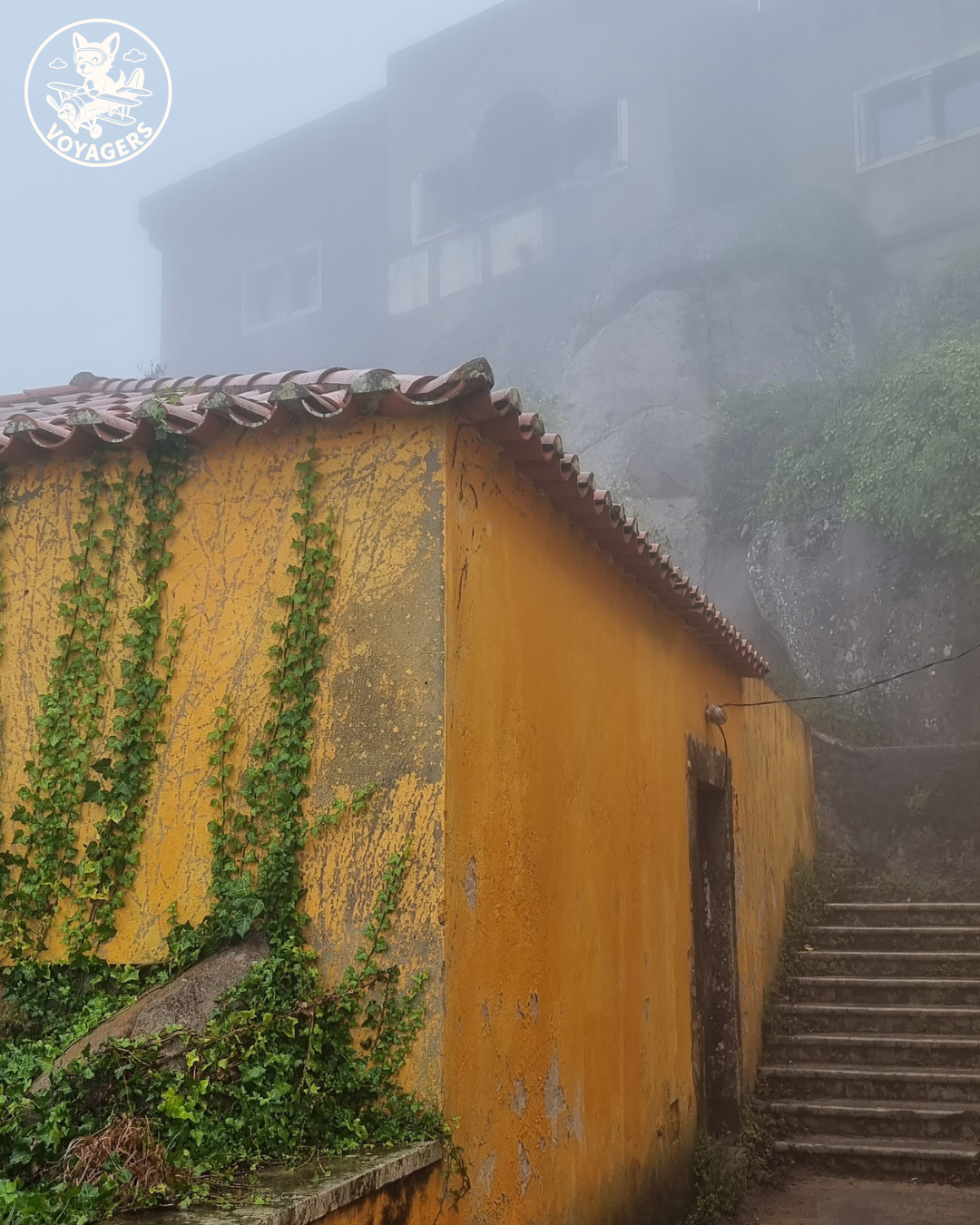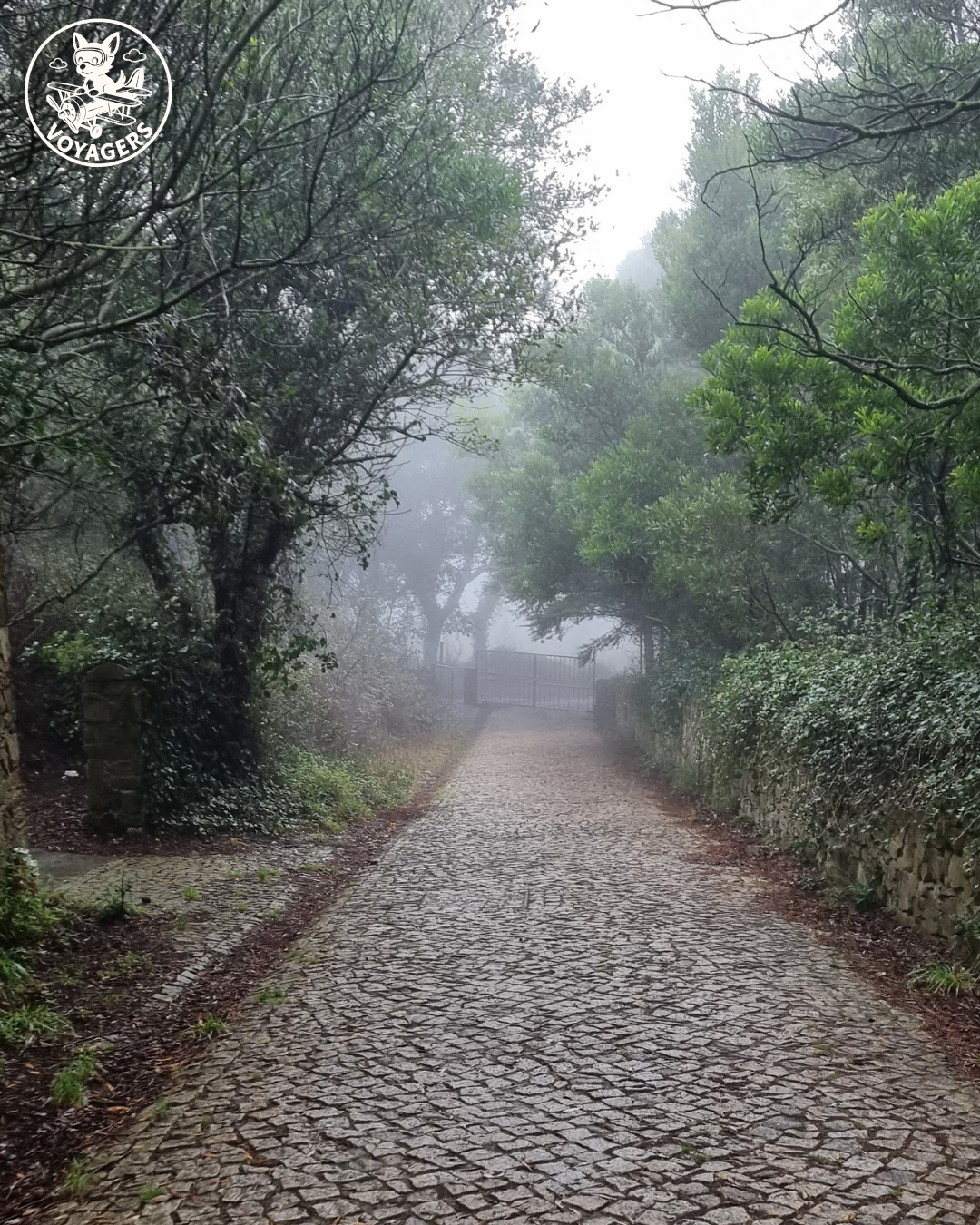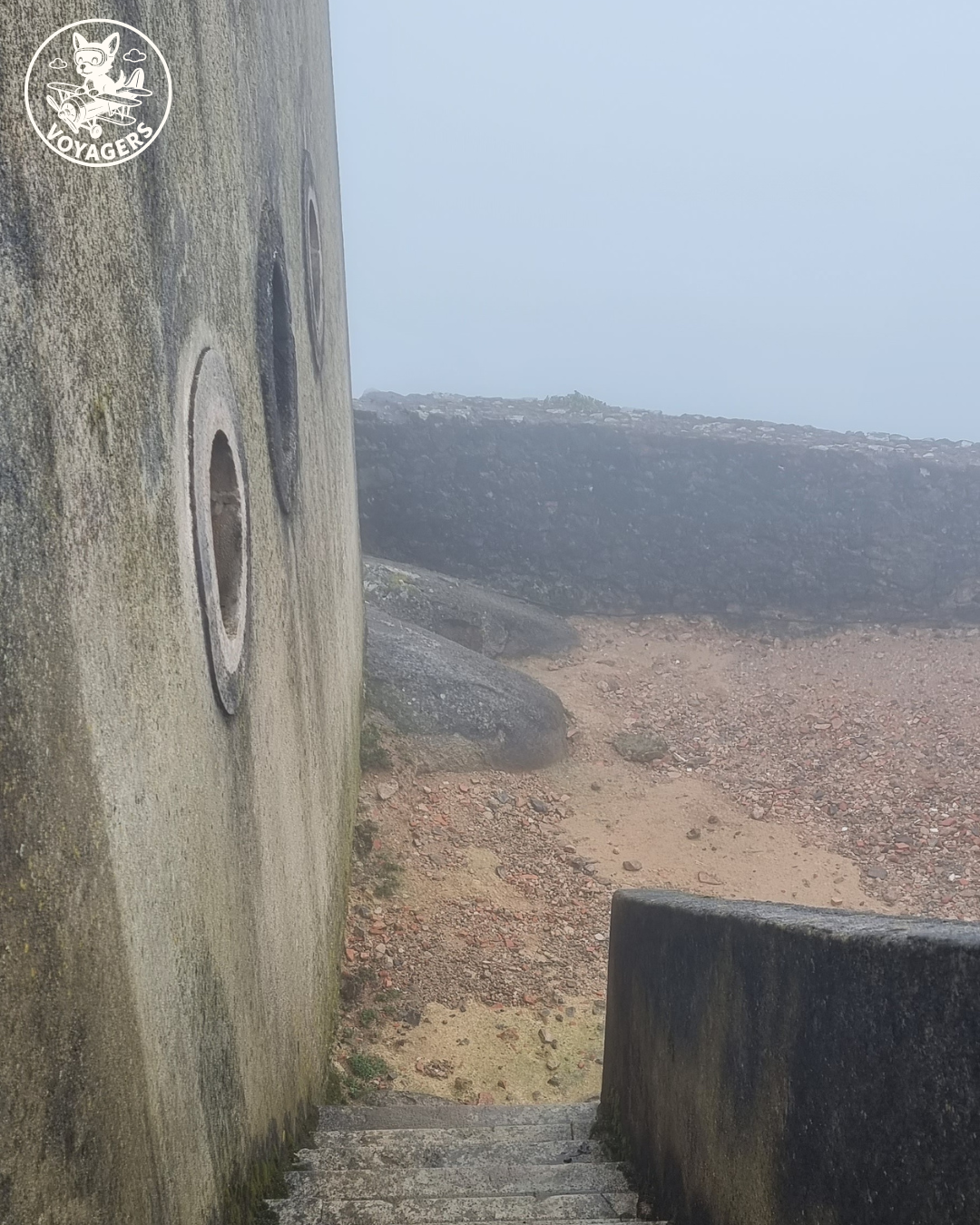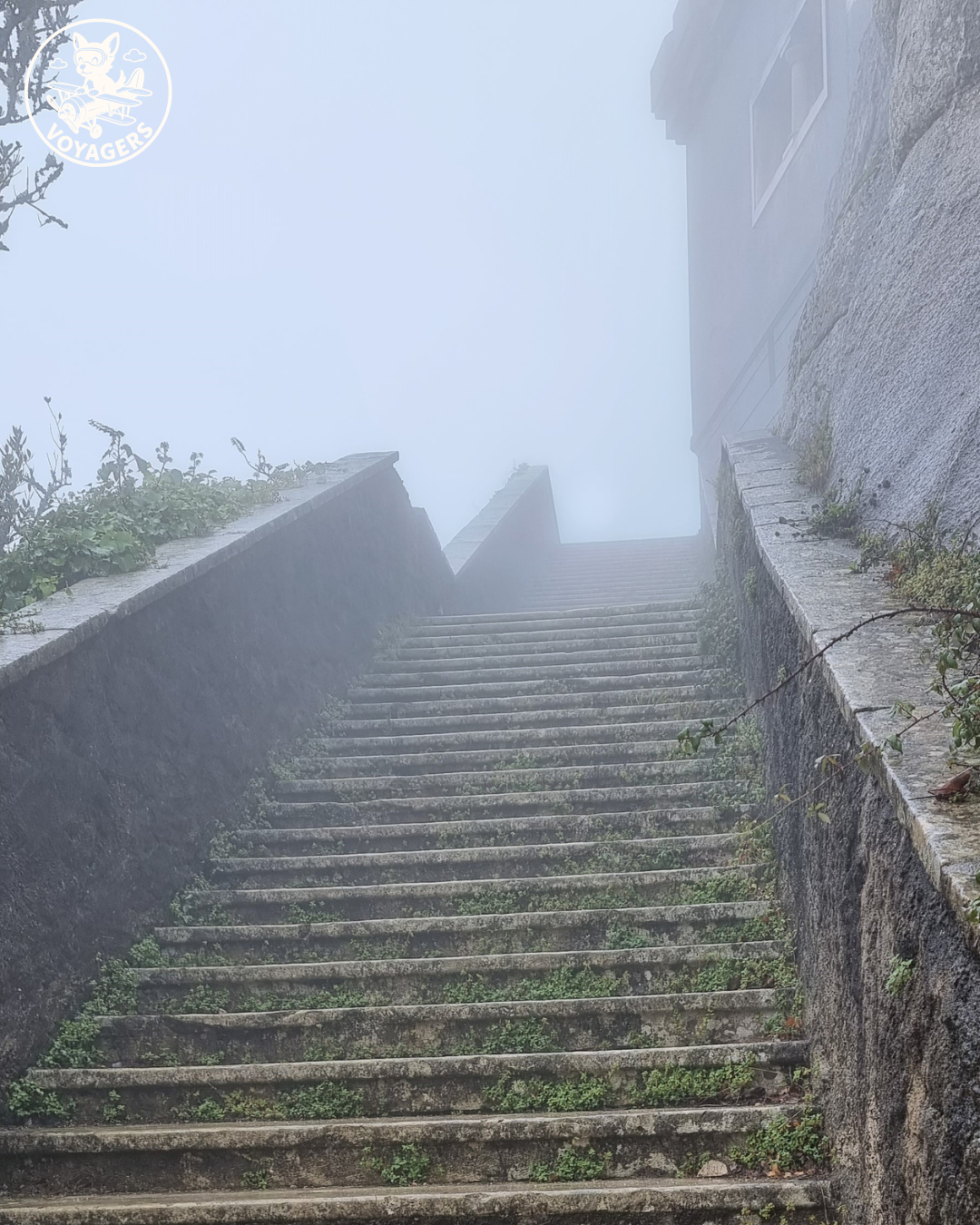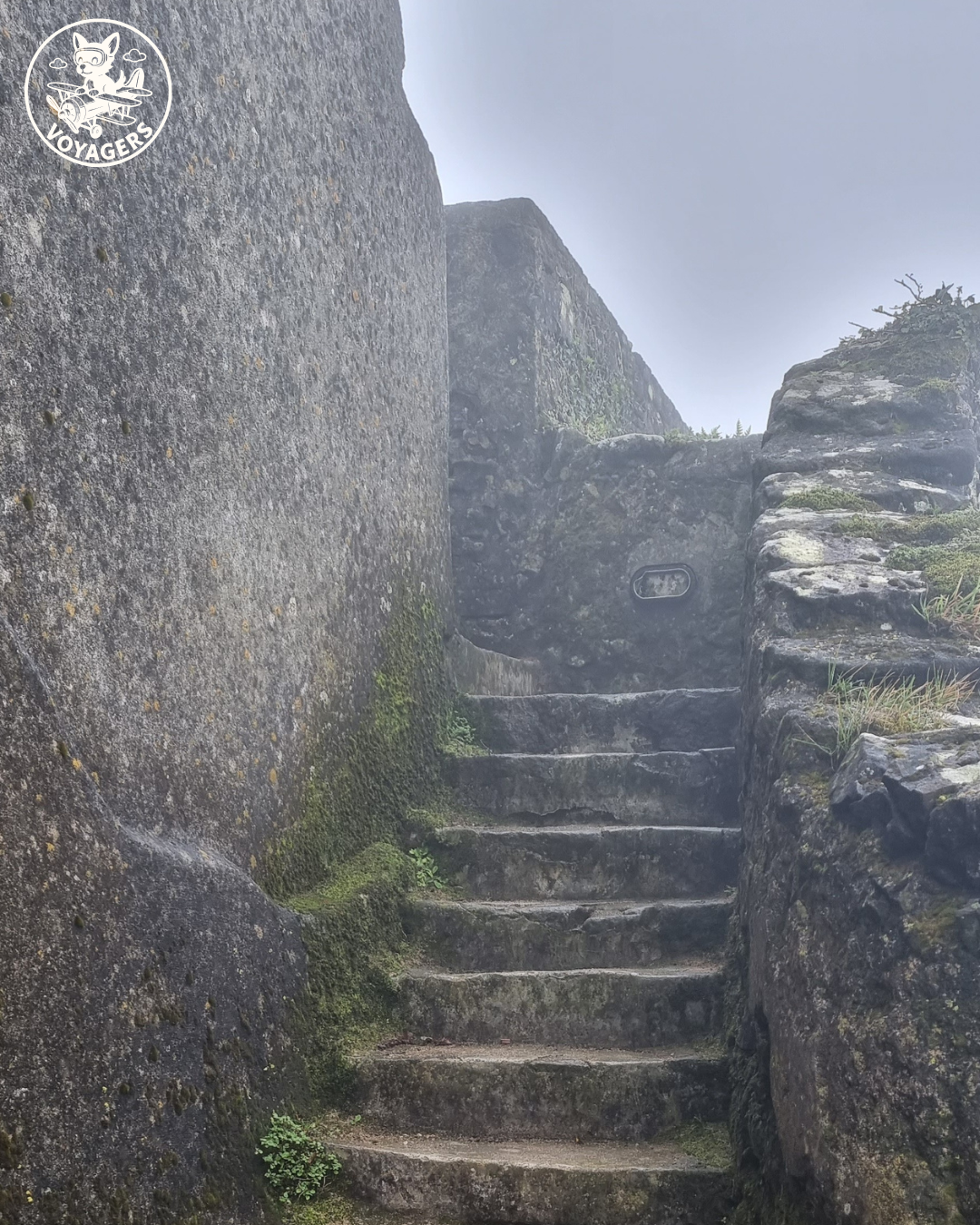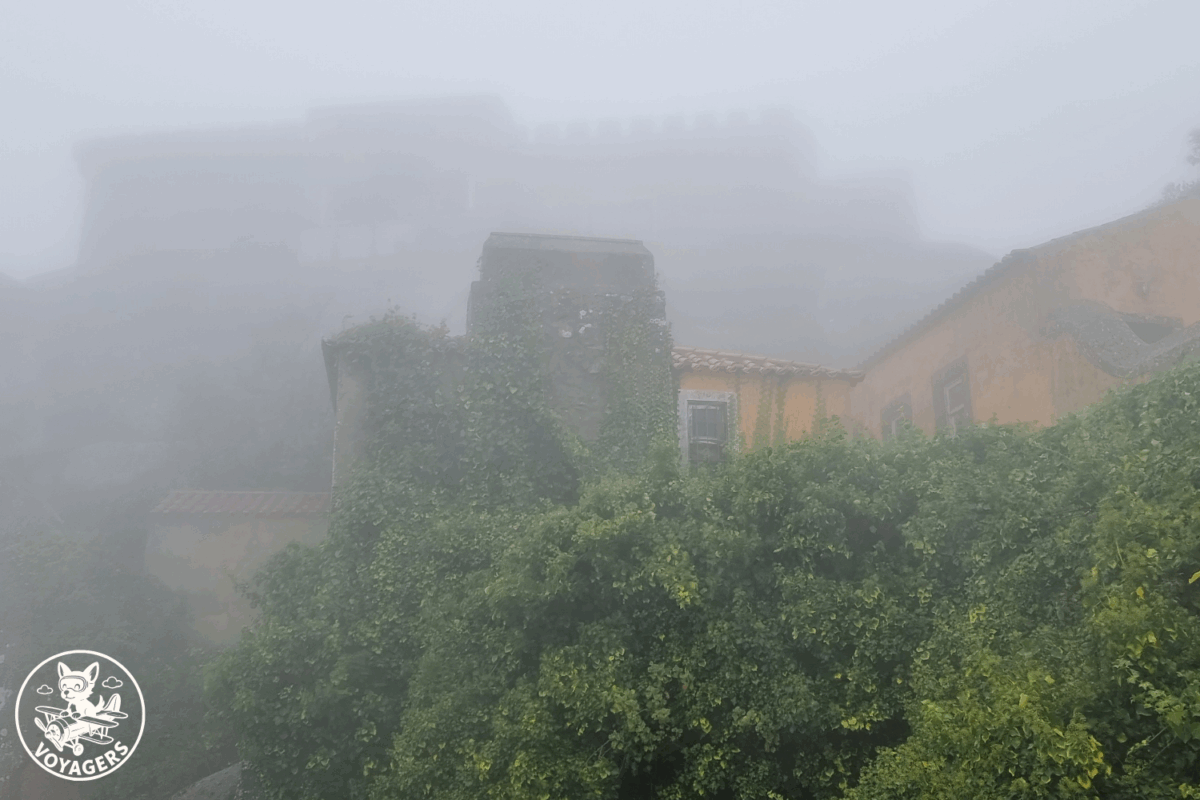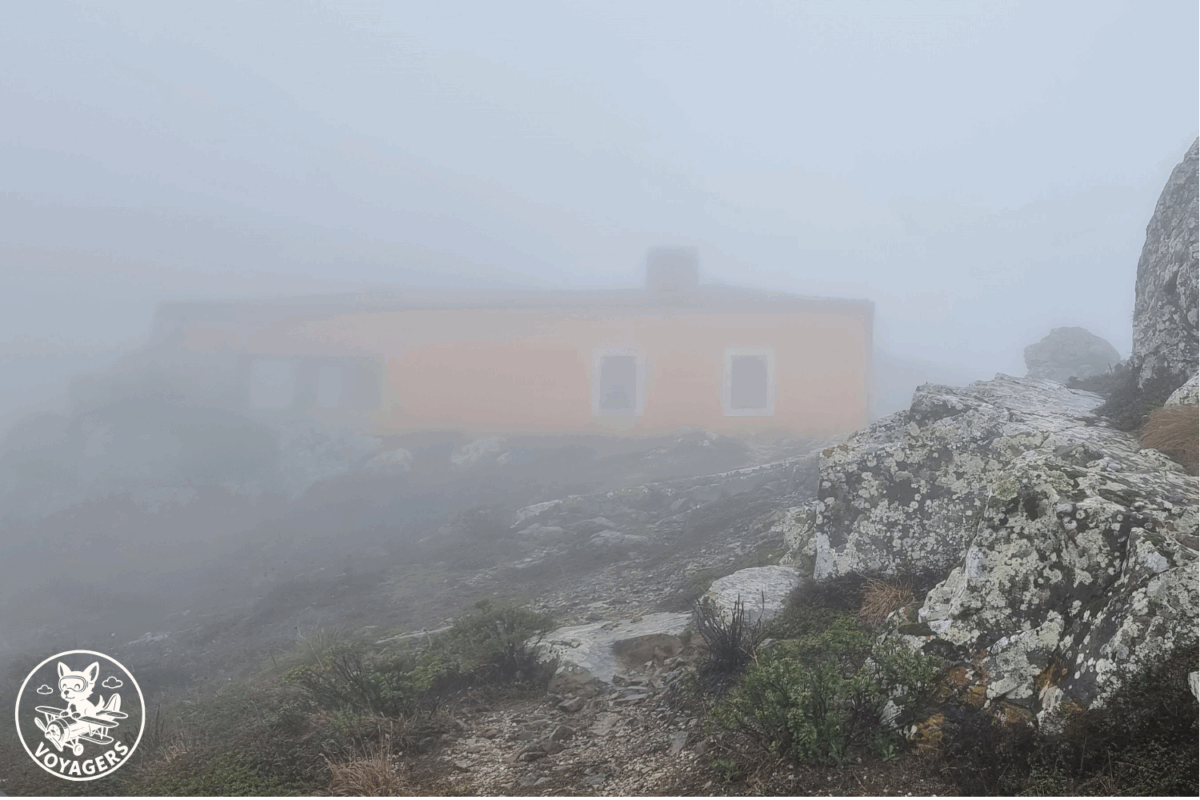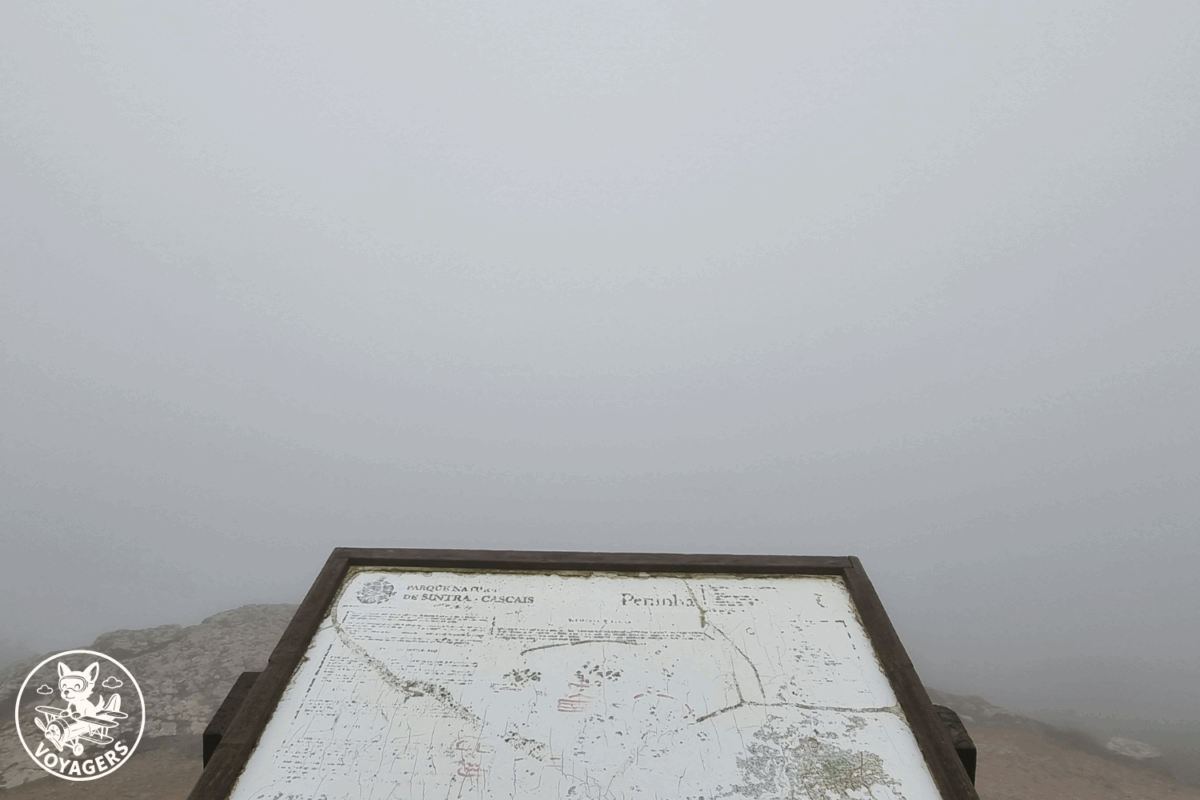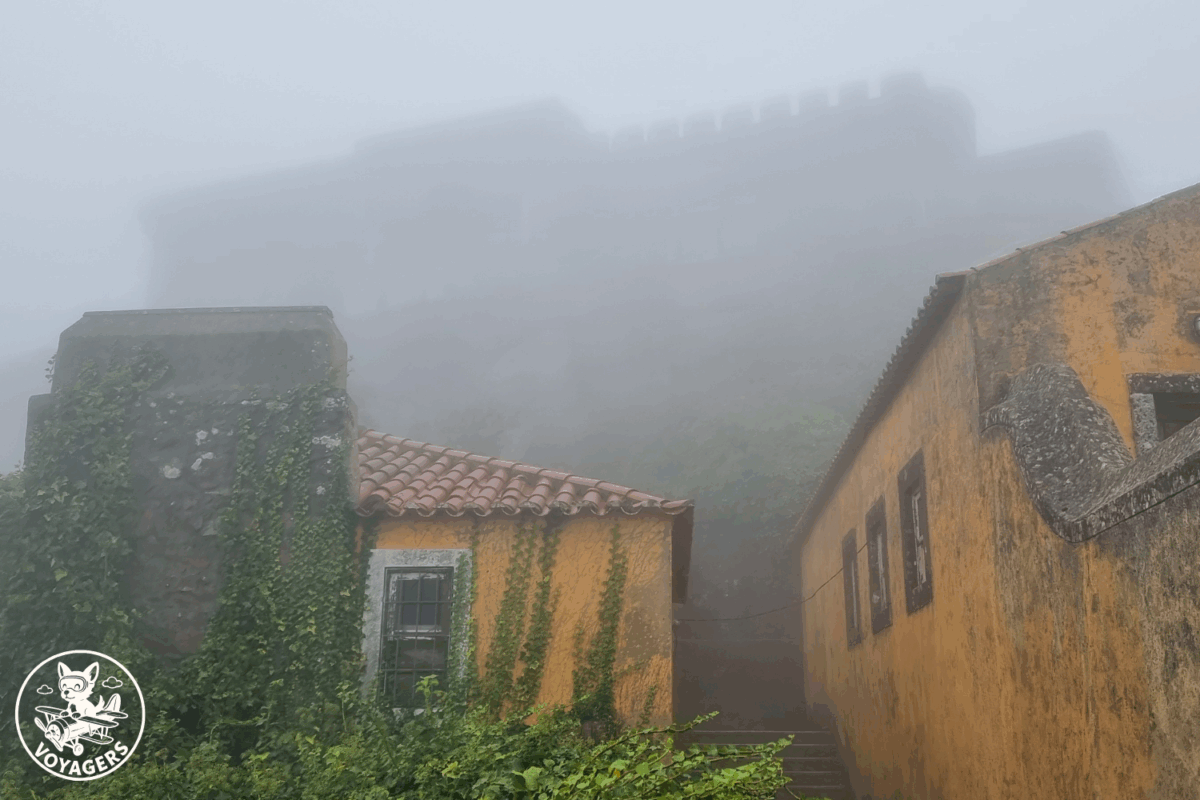Perched atop the Serra de Sintra, more than 400 meters above sea level, the Sanctuary of Peninha is an unknown, almost secret place that offers one of the most spectacular views in Portugal. Surrounded by maritime pines, heather, and ancient legends, this spiritual site invites contemplation—far from the tourist buzz of Sintra’s famous palaces.
This sanctuary, both modest and enigmatic, captivates as much by its mystical atmosphere as by its exceptional location. From its heights, the gaze sweeps over the vastness of the Atlantic Ocean and the mist-covered hills of the Serra. On clear days, you can even see Lisbon and Cape Espichel in the distance—a panorama that makes every visit unforgettable.
A Place Steeped in History and Legend
The forest surrounding Peninha feels unlike any other. Here, the trees seem to watch over the landscape. Sometimes, a sudden shaft of light pierces the mist, like a divine spotlight fallen from the sky. The wind doesn’t blow—it whispers. The pine-covered ground muffles your footsteps, giving the impression of walking through a dream. As you ascend, everything becomes softer, more blurred, as though the mountain itself is inviting you across an invisible threshold.
But Peninha’s charm goes beyond its scenery. It’s rooted deep in the country’s religious history. According to tradition, a Marian apparition took place here in the 16th century, inspiring the construction of a small chapel dedicated to Our Lady of Penha.
Centuries later, a wealthy man—drawn to solitude and romantic art—built a curious little palace right beside it. Now abandoned, it only deepens the place’s mysterious aura.
Reaching Peninha requires some effort. From Sintra or Cascais, the road winds through the dense forest of the Sintra-Cascais Natural Park. Once you arrive at the base of the sanctuary, there’s still a short uphill path to walk—a final step that enhances the feeling of pilgrimage many visitors describe.
This is not merely a scenic viewpoint. It’s an experience out of time, a space suspended between sky, sea, and stone.
A Refuge Off the Beaten Path
Unlike Sintra’s iconic attractions—like the Quinta da Regaleira, the National Palace of Pena, or the Castle of the Moors—Peninha remains off the radar, deliberately absent from standard tourist brochures. While those sites attract thousands of hurried, noisy visitors every day, Peninha follows a different rhythm: slower, quieter, more inward. People come here for the silence, the wind whispering through the rocks, and that strange sense that something sacred lingers in the stones and the air.
There are no queues here, no tour groups following umbrellas. Just nature, wind, time-sculpted rocks, and a solitary chapel perched like a secret kept through centuries. You don’t come to Peninha for a photo. You climb to it—often on foot—to feel something rare and real.
Hikers also find joy here. Several trails crisscross the area, including paths that lead to the Capuchos Monastery or even toward the wild Atlantic coast, near Guincho or Cabo da Roca. These routes, often lined with junipers and ferns, offer a total immersion in nature.
In a region like Sintra, so rich in romantic and architectural heritage, the Sanctuary of Peninha is a rare pause. A stop for those seeking not spectacular wonder, but quiet, untamed beauty. This contrast with downtown Sintra—with its tuk-tuks, street vendors, and crowded alleys—makes Peninha feel like a hidden, almost spiritual refuge, far from the world.
Peninha: A Sanctuary Like No Other
In a world saturated with curated tourist circuits and noisy crowds, the Sanctuary of Peninha offers a rare alternative. No tickets, no guides, just wind, stone, sky, and silence. It’s a place discovered slowly—by walking, by looking up, by breathing deeply.
Whether you come for the history, the spirituality, the landscape, or simply to disconnect, Peninha leaves a lasting mark. It is a sanctuary in every sense of the word—a place of retreat. And those who climb it with no expectations often come down touched, as if the mountain had whispered something they didn’t know they needed to hear.
When to Visit the Sanctuary of Peninha
There’s no bad time to visit Peninha, but some seasons make the experience even more magical. In autumn, the mist that drapes the mountain gives the sanctuary a near-mystical aura. Spring reveals a lush landscape dotted with wildflowers. In summer, clear skies can offer visibility as far as the beaches of Caparica or the cliffs of Cabo da Roca.
It’s best to come early in the morning or late in the afternoon. This avoids the midday heat, but more importantly, lets you witness the golden light that transforms the landscape into an impressionist painting. Sunset at Peninha is a magical moment—one that few visitors are lucky enough to experience, as the site remains quiet even at day’s end.
How to Get There
The sanctuary is open year-round and free to access. No ticket is needed—unlike most of Sintra’s major attractions. There is a parking area just below the sanctuary, usually available even in high season. However, the final stretch must be done on foot. Just a few minutes of walking on a rocky trail are enough to reach the summit.
A Different Kind of Experience
While the crowds head to the Palace of Pena or the Quinta da Regaleira, Peninha remains a peaceful haven. Some discover it by word of mouth. Others stumble upon it by chance, while wandering the winding roads of the natural park. This silence, this feeling of being “alone at the top of the world,” is rare today—and almost priceless.
And yet, this silence feels alive. Every stone seems to carry a memory, every gust of wind a whisper. Some visitors claim to feel a special energy here, as if Peninha were a meeting point between the natural and the spiritual. Others simply come to pause, to breathe, and to escape the rushed rhythm of modern life.
What to See Nearby the Sanctuary of Peninha
Peninha isn’t an isolated site. It’s part of a wider network of natural and cultural wonders in the region. Just a few kilometers away lies the Convento dos Capuchos—an old Franciscan monastery carved into the rock, where monks once lived in extreme simplicity and harmony with nature.
Continue westward, and you’ll quickly reach the Atlantic coast, with its wild beaches and dramatic cliffs. Cabo da Roca—the westernmost point of continental Europe—is another must-see. The contrast between the lush heights of the Serra and the endless blue of the ocean offers one of the most unique landscapes in Portugal.
In the whiteness of clouds brushing against the rocks, it becomes hard to tell where the land ends and the invisible begins. Perhaps it is there, in that sacred blur, that the soul finds refuge.
